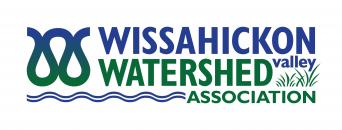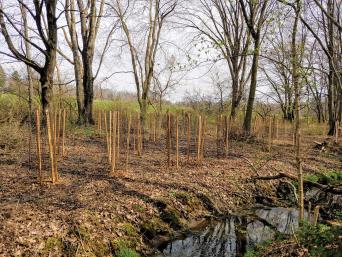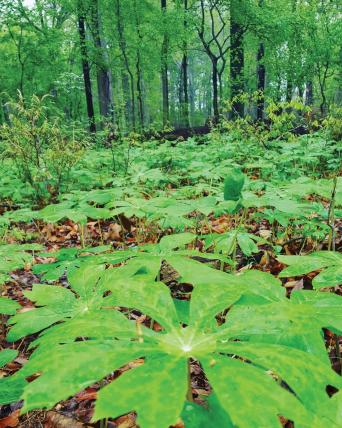
Our Strategy for Building Resilient Natural Landscapes in a Changing Climate
A little over a year ago, after sharing some information on native gardening on our Facebook page, WVWA received the first of many questions asking us what we’re doing about climate change, and how a changing environment factors into our habitat restoration and management decisions. One commenter wondered, “Is it worth making a plan so far in advance of when climate change settles down?” We believe it is. I’d like to provide a little insight into what climate change means for us, and how we are trying to build resilient natural landscapes that will survive over time.
Our forests are essential to the health of the Wissahickon watershed in so many ways. They provide and purify the air we breathe, are home to the wildlife we love, and help keep clean the water we drink. Over the next few decades, the forest as we know it will change and our local ecosystems will face new challenges. Milder winters, longer summer heat waves, frequent and severe storms that drop more water over shorter periods of time than ever before, flooding, and periods of drought are the changes already playing out, and will continue to be a part of our everyday lives. As the keepers of much of our community’s forests, wetlands, meadows, and floodplains, WVWA is obligated to recognize the impact climate change will have on the natural places we care for, and to do our best to help them thrive — now and long after we’re gone. When we do habitat improvement projects, we need to be sure that we are planting species that have the greatest chance of surviving in more challenging environmental conditions.
Planning habitat restoration with climate change in mind is still a relatively new issue in the field of conservation, and there is a lot we still don’t know. The frequency of both flooding and drought will increase, but exactly how rainfall will vary across regions is more difficult to say. Temperature changes and their effects on local forest species are far more reliably predicted, however, and those predictions provide useful guidance in how we manage our lands.
What makes certain trees and shrubs do well in one place, and struggle in another? This is what matters most in building resilient landscapes, and it’s where we begin. Every plant evolves in a particular climate, and every plant has its limits — a minimum and maximum temperature at which it can survive. This determines where it can survive. Philadelphia is the 17th fastest-warming city in the United States, and it’s predicted that by 2050, parts of the state will have the same average temperatures as areas of Virginia do now. Using projections like this, and the known temperature limits of tree and shrubs species common to the Philadelphia area, the USDA Forest Service created models that inform us of the likelihood of local species to be resilient, adaptable and likely to survive (and even thrive in) a changing climate.
As we write 10-year management plans for our 12 nature preserves and plan our tree plantings each year, we’ll always begin by creating a list of the plants that are the most beneficial to the wildlife we want to conserve — the birds, bats, salamanders, turtles and butterflies defined in the Pennsylvania State Wildlife Action Plan as species of greatest conservation need. But based on what we know about how well particular species will do in future environmental conditions, we choose a little differently than we might have in the past. It doesn’t necessarily mean that we will stop planting certain trees and shrubs — after all, what we are using are only models, and nothing is guaranteed. But it means we will plant more of what has the best chance to survive different, more challenging conditions, and less of what may not.
WVWA’s goal in caring for our protected lands is to help nature thrive so that we continue to have clean air and clean water, a place for the wildlife we love, and green spaces to go where we can connect to the earth. In the next few decades, those green places will need us, and we’ll need them. Planning for climate change means we are doing our best to ensure that the work we do to create thriving natural landscapes has value not only now, but well into the future.
If you are a property owner and want to learn more about what species have the greatest likelihood of adapting to climate change and might be suitable for your own backyard, contact me at margaret@wvwa.org for resources.


